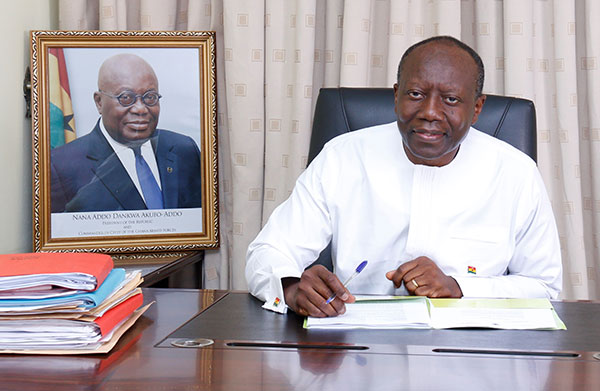Rating agency, Moody’s has downgraded Ghana’s long-term issuer and senior unsecured debt ratings from Caa1 to Caa2 and placed the ratings on review for downgrade.
Moody’s, in February this year, downgraded Ghana from B3 to Caa1.
The agency contends that the further downgrade stems from the government’s decision to seek support from the International Monetary Fund which often brings support and stability to a distressed economy.
Moody’s asserts that though government is taking steps to tighten its monetary policy, inflation continues to rise putting immense pressure on the cedi, while the economy continues to deteriorate.
This rating follows another downgrade by Fitch Ratings which saw Ghana’s long-term local and foreign-currency issuer default ratings (IDRs) drop to ‘CC’, from ‘CCC’.
Find the rating assessment below
Rating Action: Moody’s downgrades Ghana’s rating to Caa2 and places it on review for downgrade
30 Sep 2022
The rating downgrade to Caa2 reflects the recent macroeconomic deterioration, further heightening the government’s liquidity and debt sustainability difficulties and increasing the risk of default. Despite Ghana’s tightening of monetary policy in response to the global price shock, inflation continues to rise from high levels and the currency has been under very significant pressure. Combined, a sharp rise in interest rates, high inflation and a rapidly weakening currency exacerbate the government’s debt challenges. Without external support, the government’s policy levers to arrest a worsening macroeconomic backdrop and heavier debt burden are extremely limited; the government’s small revenue base, largely and increasingly absorbed by interest payments, further intensifies the policy dilemma between competing objectives, including servicing debt while meeting essential social needs. As a result, the risk of an eventual default has increased.
The initiation of the review for downgrade is prompted by the ongoing negotiations between the government and the IMF over a funding programme that may include a condition for debt restructuring to ensure debt sustainability. Such a restructuring would likely be considered a distressed exchange and thereby a default under the rating agency’s definition. The review will evaluate the likelihood of a debt restructuring being a prerequisite to secure sufficient and durable financing from official sources to avert a fiscal and balance of payments crisis that is already unfolding.
Concurrent to the rating downgrade, Moody’s has also downgraded Ghana’s bond enhanced by a partial guarantee from the International Development Association (IDA, Aaa stable) to Caa1 from B3, reflecting a blended expected loss consistent with a one-notch uplift on the issuer rating. The rating has also been placed on review for downgrade given the review initiated on all unsecured debt ratings of the government.
Finally, Moody’s has lowered Ghana’s local currency (LC) and foreign currency (FC) country ceilings to respectively B2 and B3, from B1 and B2. Non-diversifiable risks are captured in a LC ceiling three notches above the sovereign rating, taking into account relatively predictable institutions and government actions, limited domestic political risk, and low geopolitical risk; balanced against a large government footprint in the economy and the financial system and external imbalances. The FC country ceiling one notch below the LC country ceiling reflects constraints on capital account openness and fiscal policy effectiveness against robust foreign exchange reserves buffers and average monetary policy effectiveness.


Comments are closed.